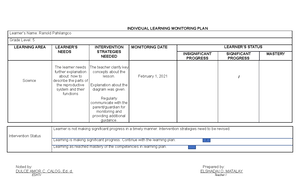- Information
- AI Chat
Was this document helpful?
Teaching Approaches in Social Studies A 30 Items Rationale
Course: Bachelor of Secondary Education (BSED)
999+ Documents
Students shared 2392 documents in this course
University: Mindanao State University
Was this document helpful?

Teaching Approaches in Social Studies A 30-Items Rationale
1. It is based on the belief that learning occurs when learners are actively involved in the learning
process and not just possibly receivers of information.
A. Experimental learning
B. Constructive teaching
C. Progressive learning
D. Conceptual learning (involves students engaged in quality learning experiences based around
key concepts and central ideas rather than using the more traditional method of focusing on learning on
topics.)
2. What is drawn from this philosophy of learning that prescribes only necessary subjects in basic
education?
A. Existentialism C. Essentialism
B. Classify D. Behaviorism
3. Which part of instruction gives due consideration to differences in interests, abilities and needs of
learning?
A. Experiential
B. Adaptive (Adaptive Learning is the delivery of custom learning experiences that address the
unique needs of an individual through just-in-time feedback, pathways, and resources (rather than
providing a one-size-fits-all learning experience).
C. Experimental
D. Remedial
4. The following demonstrates that a teacher is competent in content knowledge and pedagogy?
A. Concept based teaching C. Rote memorization and drill-teaching
B. Teacher-centered teaching D. Research-based teaching
5. Collaborative learning among children is demonstrated in the following situation except in one.
A. Children learn to work in different situations in different contexts with different teams
B. Learners known how to deal with their classmates, with their teachers and with other people
C. Learners demonstrate leadership and teamwork and group work habits.
D. Learners do a lot of reflection and intelligent decision-making.
6. Challenge-based learning builds on the practice of problem-based learning in which students work on
real world problems. What BEST describes the learning experiences of teachers and learners?










